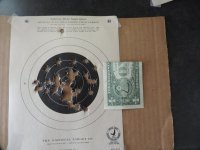1sailor
Member
I own an older (not W. Germany) Sig P239 and I have a question regarding the decockers on Sig pistols. Is there a firing pin block or some other device that keeps the gun safe when decocking. The hammer seems to want to drop pretty fast and it feels like the only thing slowing it down is pressure on the decocker lever. Seems like it must have some sort of failsafe. On my Beretta it's pretty obvious but I'd like some reassurance on the Sig. Otherwise it's just as easy to physically lower the hammer.


